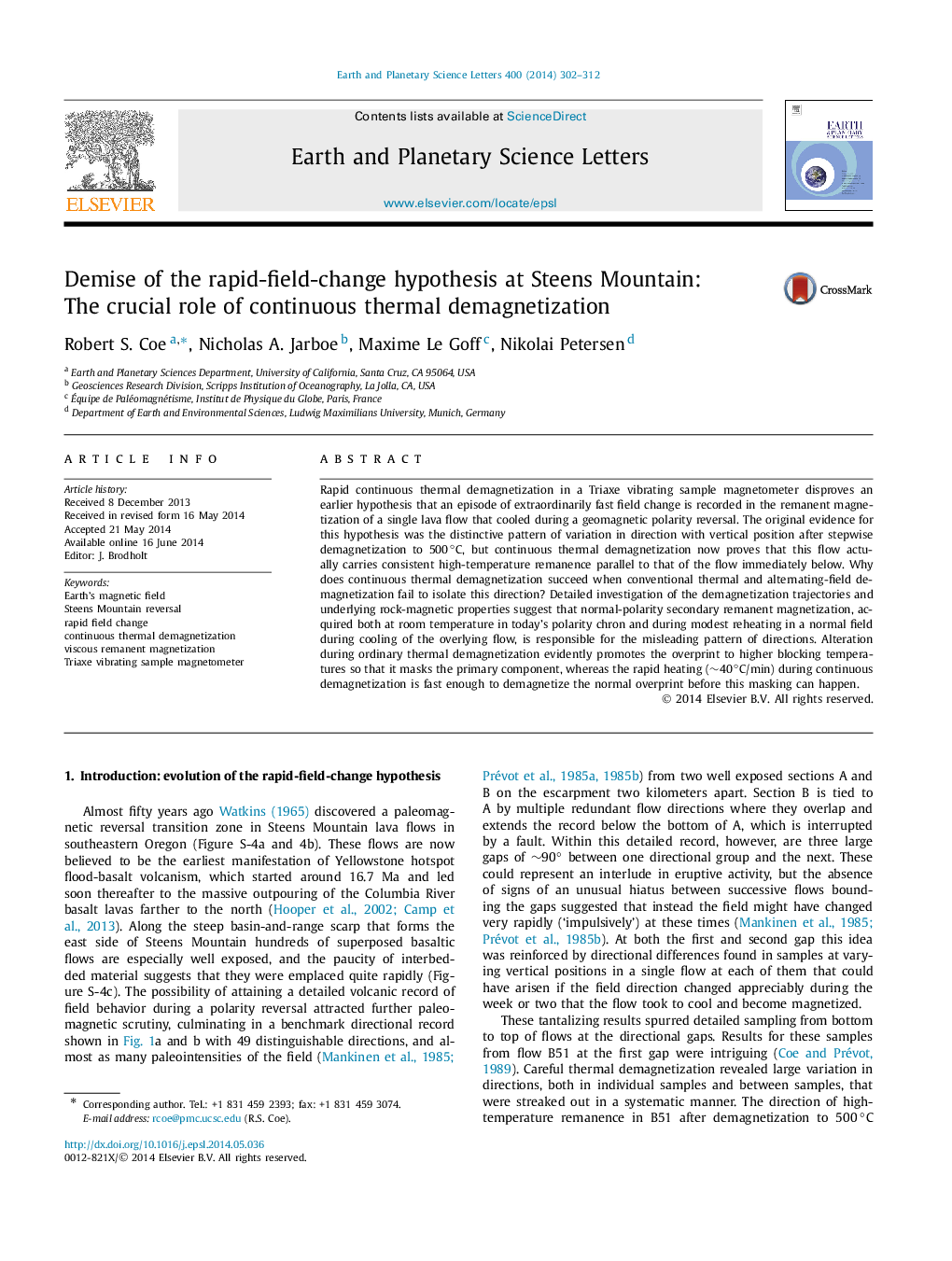| کد مقاله | کد نشریه | سال انتشار | مقاله انگلیسی | نسخه تمام متن |
|---|---|---|---|---|
| 6428800 | 1634756 | 2014 | 11 صفحه PDF | دانلود رایگان |
- The case for extraordinarily rapid field change at Steens Mountain is now untenable.
- Rapid continuous thermal demagnetization was key because conventional methods failed.
- Alteration during stepwise thermal demagnetization masked the primary component.
- Overprints were promoted to high temperature during ordinary thermal demagnetization.
- Continuous thermal demagnetization was fast enough to outrun magnetic masking.
Rapid continuous thermal demagnetization in a Triaxe vibrating sample magnetometer disproves an earlier hypothesis that an episode of extraordinarily fast field change is recorded in the remanent magnetization of a single lava flow that cooled during a geomagnetic polarity reversal. The original evidence for this hypothesis was the distinctive pattern of variation in direction with vertical position after stepwise demagnetization to 500â°C, but continuous thermal demagnetization now proves that this flow actually carries consistent high-temperature remanence parallel to that of the flow immediately below. Why does continuous thermal demagnetization succeed when conventional thermal and alternating-field demagnetization fail to isolate this direction? Detailed investigation of the demagnetization trajectories and underlying rock-magnetic properties suggest that normal-polarity secondary remanent magnetization, acquired both at room temperature in today's polarity chron and during modest reheating in a normal field during cooling of the overlying flow, is responsible for the misleading pattern of directions. Alteration during ordinary thermal demagnetization evidently promotes the overprint to higher blocking temperatures so that it masks the primary component, whereas the rapid heating (â¼40â°C/min) during continuous demagnetization is fast enough to demagnetize the normal overprint before this masking can happen.
124
Journal: Earth and Planetary Science Letters - Volume 400, 15 August 2014, Pages 302-312
